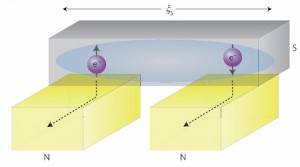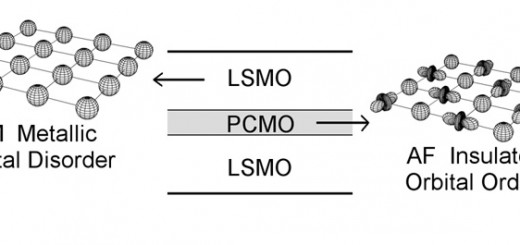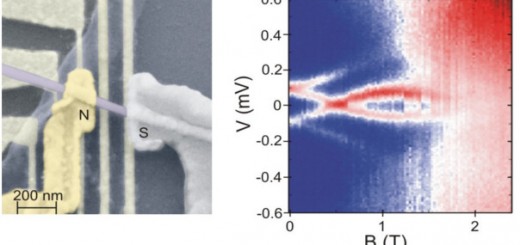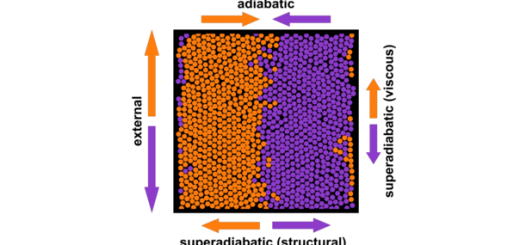Cooper Pair Splitting as a Source of Entangled Electrons
 Date: Monday, 16th December, 2013.
Date: Monday, 16th December, 2013.
Time: 12:00h
Place: Departamento de Física Teórica de la Materia Condensada, Facultad Ciencias, Módulo 5 &, Aula de Seminarios (5ª Planta).
Jan Martinek (Institute of Molecular Physics- Polish Academy of Sciences).
ABSTRACT:
We study an entangled state of spatially separated electrons, in particular its spins, in a solid state electronic system. The ground state of conventional superconductors is a singlet state of electron Cooper pairs that can provide a natural source of entangled electrons.
One of the proposals to obtain the nonlocal entanglement of electrons is to use the Cooper pairs split in the Double Quantum Dot (DQD) system using the Coulomb interaction between electrons. We have analyzed an efficiency of the separation of Cooper pairs in systems, where the DQD is connected to the two superconducting leads, or to the superconducting and normal leads. Addressing the idea of quantum communication with entangled electrons in a solid state, where ferromagnetic detectors allow for spin correlation detection, we provide, using quantum information theory, a lower bond on the spin polarization of detectors. In ferromagnetic detectors the spin information is transformed into charge information, however, any real magnetic materials feature imperfect spin polarization due to presence of both spin component in density of states at the Fermi surface. We find that lower bond for the spin polarization is p > 58 % for detection of entanglement using an optimal entanglement witness. It provides the minimal spin polarization of ferromagnetic materials that can be useful in quantum communication.



















